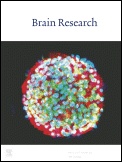
“LLC-PK1 cells, an immortalized epithelial cell line derived from pig renal proximal tubules, express all the major players of the endocannabinoid system (ECS) such as CB1, CB2 and TRPV1 receptor, as well as the main enzymes involved in the biosynthesis and degradation of the major endocannabinoids named 2-arachidonoylglycerol, 2-AG and anandamide, AEA.
Here we investigated whether the damages caused by ischemic insult either in vitro using LLC-PK1 cells exposed to antimycin A (an inductor of ATP-depletion) or in vivo using Wistar rats in a classic renal ischemia and reperfusion (IR) protocol, lead to changes in AEA and 2-AG levels, as well as altered expression of genes from the main enzymes involved in the regulation of the ECS.
Our data show that the mRNA levels of CB1 receptor gene were downregulated, while the transcript levels of monoacylglycerol lipase (MAGL), the main 2-AG degradative enzyme, are upregulated in LLC-PK1 cells after IR model. Accordingly, IR was accompanied by a significant reduction in the levels of 2-AG and AEA, as well as of the two endocannabinoid related molecules, oleoylethanolamide (OEA) and palmitoylethanolamide (PEA) in LLC-PK1 cells. In kidney cortex homogenates, the AEA levels were selectively significantly decreased. In addition, we found that both the in vitro and in vivo model of IR caused a reduction in the expression and activity of the Na+/K+ATPase. These changes were reversed by the CB1/CB2 agonist WIN55,212, in a CB1-receptor dependent manner on LLC-PK1 IR model.
In conclusion, the ECS and Na+/K+ ATPase are down-regulated following IR model in LLC-PK1 cells and rat kidney. We suggest that CB1 agonists might represent a potential strategy to reverse the consequences of IR injury in kidney tissues.”
https://www.ncbi.nlm.nih.gov/pubmed/29890144
https://www.sciencedirect.com/science/article/pii/S0006295218302132









